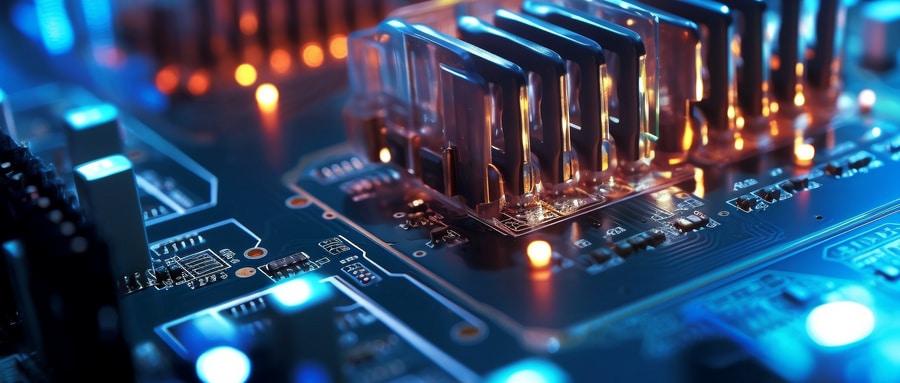Exploring Different Kinds of PCBs: A Guide to Their Applications and Special Features
Printed circuit boards (PCBs) come in many different varieties, each tailored for particular applications or requirements. This article will examine various kinds of PCBs while exploring their unique characteristics, applications and advantages.
1. Kinds of PCBs: Single-Sided PCB
Single-sided PCBs are the easiest and most frequently used type of PCB. Featuring just a single layer of substrate material (usually FR-4), with copper traces on one side and solder mask on the other, single-sided boards are cost-effective solutions designed for electronics applications where space constraints don’t have an impact.
Applications include consumer electronics, power supplies, LED lighting fixtures and toys as well as low density circuits.
2. Kinds of PCBs: Double-Sided PCBs
Double-sided PCBs, as their name implies, contain copper traces on both sides of a substrate and connect using plated through holes (PTH), making for more complex circuit designs and providing greater routing flexibility and routing flexibility than single-sided boards. They’re widely used across applications.
Applications include industrial controls, automotive electronics, telecommunications equipment, instrumentation and power converters.
3. Kinds of PCBs: Multilayer PCBs
Multilayer PCBs consist of three or more layers of substrate material sandwiching copper traces and insulating layers — providing increased routing density, noise immunity improvements and signal integrity improvements. Their number can range anywhere from four to many layers if necessary.
Applications include high-speed data communication, advanced computing systems, aerospace technology, medical devices and complex electronics.
4. Kinds of PCBs: Rigid PCBs
These boards are the most prevalent type and offer a rigid structure with secure component mounting and stability, typically made out of an FR-4 material or similar substrate material that allows for secure component attachment and placement. Rigid PCBs are often preferred when durability and reliability are at their utmost.
Applications include computers, consumer electronics, automotive systems, industrial equipment and power distribution.
5. Kinds of PCBs: Flex PCBs
Flex PCBs or FPCs offer excellent flexibility and bending capability, thanks to being composed of flexible materials like polyimide or polyester film that allow it to conform to complex shapes or fit tight spaces easily. They’re particularly suitable for applications requiring repeated movement or vibration resistance, making flex PCBs the go-to choice.
Applications include wearable devices, medical sensors, automotive electronics, aerospace systems and curved electronic displays.
6. Kinds of PCBs: Rigid-Flex PCBs
Rigid-flex PCBs combine the benefits of rigid and flex PCBs into one board, uniting both into a compact form factor with improved reliability and increased design flexibility. They consist of both rigid and flexible sections interconnected through either through holes or flexible connectors for connectivity between rigid sections and flexible ones, for increased design freedom and reduced footprint requirements.
Applications include folding smartphones, advanced robotics, military equipment, aerospace technology and high-density electronic devices.
7. Kinds of PCBs: HDI PCBs
High Density Interconnect (HDI) PCBs are specifically designed to maximize available space while offering increased interconnection density. Utilizing advanced microvia technology, these boards feature smaller vias for increased component spacing. Ultimately, these HDI boards allow complex designs that offer optimal signal integrity despite miniaturized construction methods.
Applications include mobile devices, advanced communication systems, high-speed computing and miniature electronics.

Printed circuit boards (PCBs) offer engineers and designers many options to meet varying applications and needs. Understanding the characteristics and applications of single-sided, double-sided, multilayer rigid, flex, rigid-flex and HDI PCBs allows engineers and designers to make informed choices when selecting the most appropriate board type for their projects – be they consumer electronics devices or high-tech aerospace systems. No matter your industry needs a PCB type can meet them!
Kinds of PCBs FAQ:
- What are the kinds of PCBs?
PCBs (Printed Circuit Boards) come in various types depending on their material, number of layers and technology used in mounting components. These include Single-Sided PCBs, Double-Sided PCBs, Multi-Layer PCBs, Rigid PCBs, Flexible PCBs, Rigid-Flex PCBs, High Frequency PCBs, and Aluminum-backed PCBs. - What are Single-Sided PCBs?
These are the simplest and the most basic kind of PCBs, having components on one side of the board and the conductor pattern on the other side. - What are Double-Sided PCBs?
These boards have a conductor pattern on both sides of the substrate. Components can be placed on both sides, making the board more dense. The two sides are connected using drilled holes called vias. - What are Multi-Layer PCBs?
Multi-Layer PCBs have more than two conductor layers, separated by insulation layers. They are used in complex electronics, where more space is needed for the conductor pattern. - What are Rigid PCBs?
Rigid PCBs are non-flexible circuit boards made from a solid substrate material like fiberglass that prevents the board from twisting. - What are Flexible PCBs?
Flexible PCBs are made from materials that can bend and flex while maintaining the integrity of the circuits. They are typically used in devices where space and weight are critical considerations. - What are Rigid-Flex PCBs?
These are a hybrid variety combining the features of both rigid and flexible PCBs. They consist of regions of flexible circuits and rigid circuits integrated into a single board. - What are High Frequency PCBs?
High Frequency PCBs are designed to work smoothly in high frequency environments (1 GHz or above). They are made from materials like PTFE (Teflon) that exhibit low signal loss at high frequencies. - What are Aluminum-Backed PCBs?
These boards have a thermo-conductive aluminum layer to help dissipate heat away from crucial components. They are used in LED lighting, power converters, and other applications dealing with a significant amount of heat. - What PCB type should I use for my application?
The choice of PCB type depends on various factors such as the complexity of the design, the operating environment, space constraints, and the heat to be dissipated. It is recommended to talk to a PCB manufacturing professional to determine what is best for your specific application.























